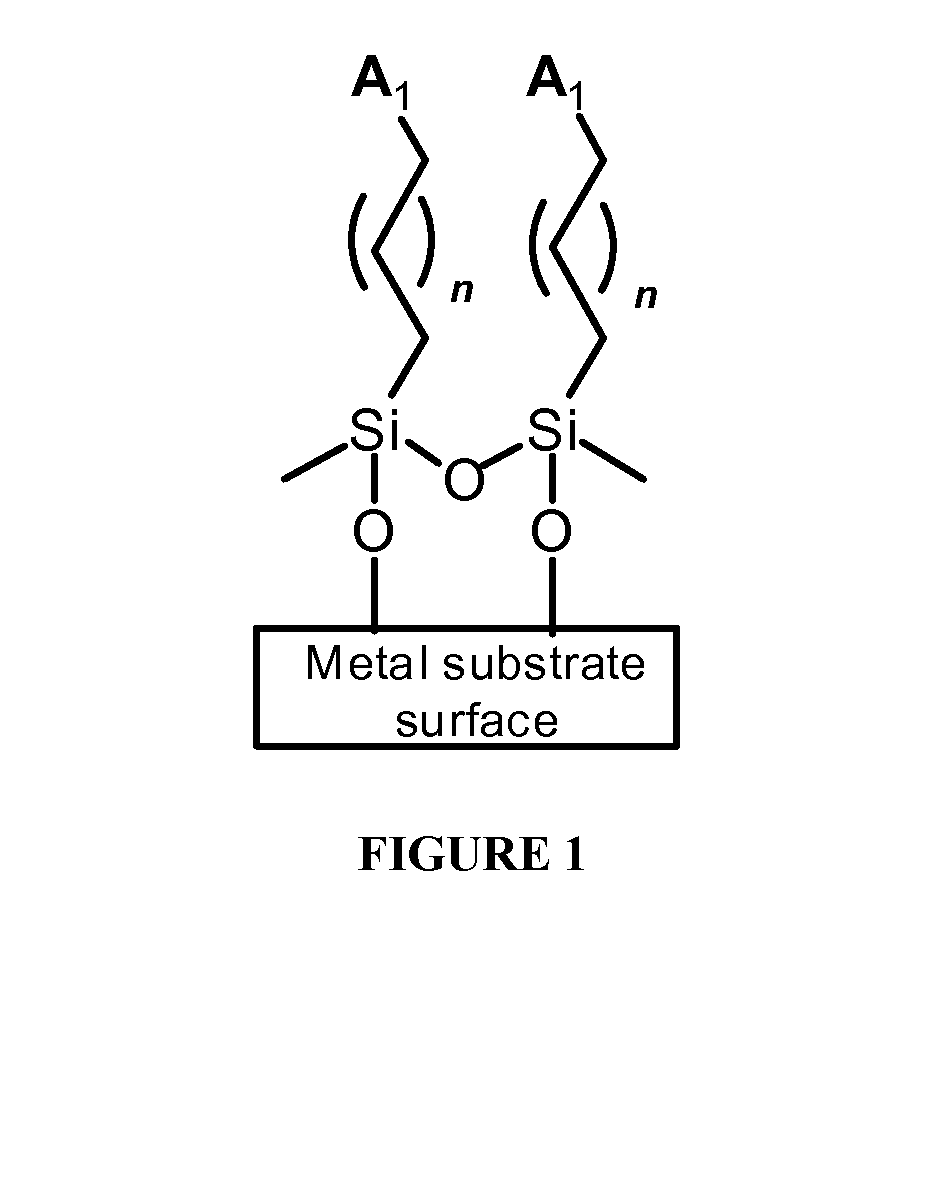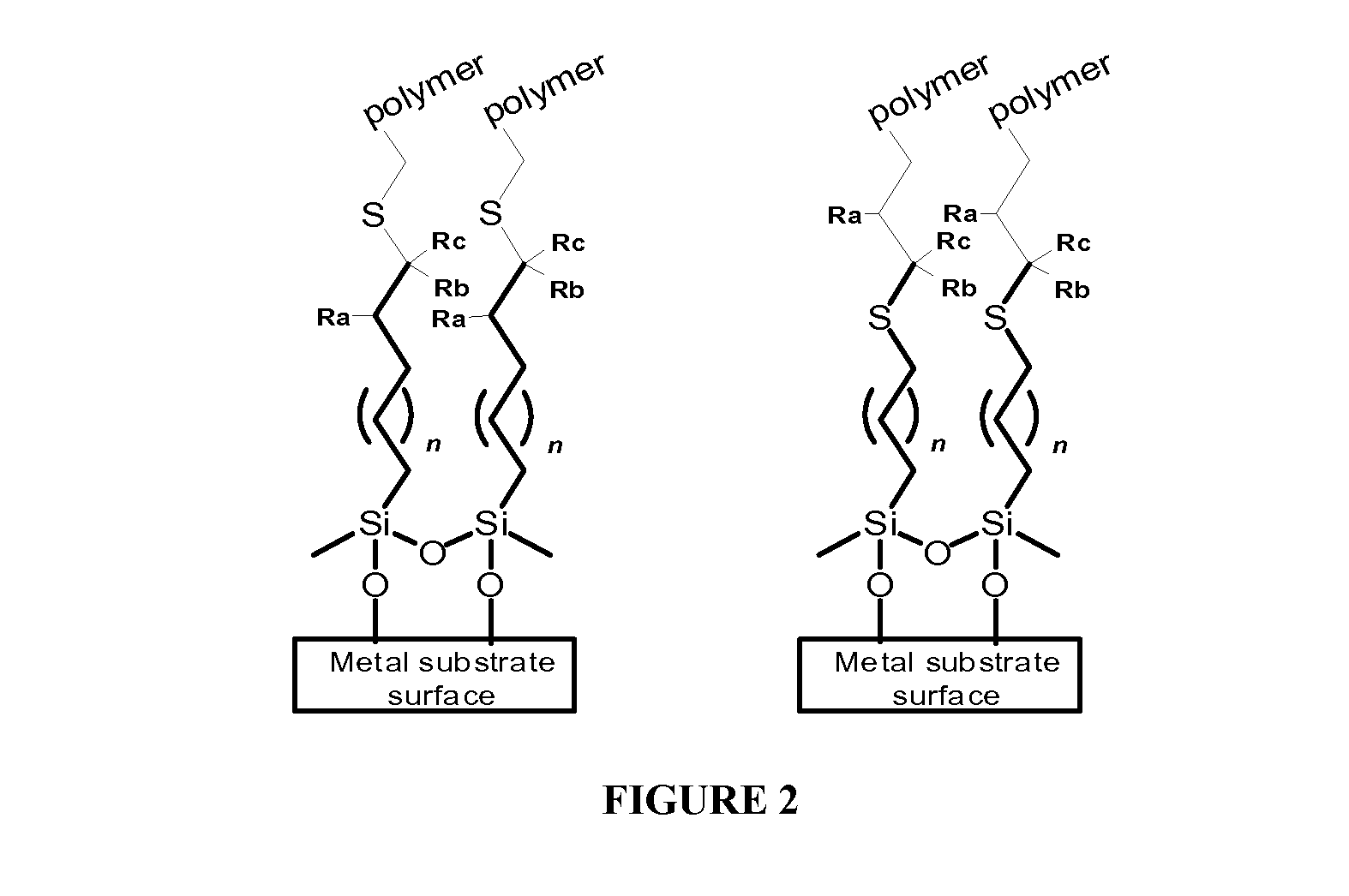Method for grafting polymers on metallic substrates
a technology of metallic substrates and polymers, which is applied in the direction of prosthesis, catheters, food packaging, etc., can solve the problems of no commercial solution available to circumvent, and the surface treatment of titanium-based substrates exhibits considerable drawbacks, and achieves low immobilisation stability, high polymer density, and simple
- Summary
- Abstract
- Description
- Claims
- Application Information
AI Technical Summary
Benefits of technology
Problems solved by technology
Method used
Image
Examples
examples
Materials
[0194]Solvents were purchased from SDS (Peypin, France).
[0195]Titanium substrates were purchased from Goodfellow (Lille, France).
[0196]Silicon (100) wafers covered by a native oxide layer were purchased from Neyco (Paris, France).
[0197]MeO-PEG-SH (Mw=5000 g / mol) was purchased from Rapp polymere (Tiibingen, Germany).
[0198]Allyl-modified methylcellulose was prepared according to Example 7 (copolymer 11) as described in WO 2008 / 041187.
[0199]10-Undecenyltrichlorosilane was purchased from ABCR (Karlsruhe, Germany).
[0200]2,2-Dimethoxy-2-phenylacetophenone (IRGACURE 651) and 2-Benzyl-2-(dimethylamino)-4′-morpho linobutyrophenone (IRGACURE 369), O-(2-Mercaptoethyl)-O′-methyl-hexa(ethylene glycol) as well as FITC labelled BSA and fibrinogen were purchased from Sigma-Aldrich (Lyon, France).
A. Surface Modification of Metal Substrates
Ex. 1
Vinyl-Comprising Anchoring Molecules / PEG-SH on Ti Substrate
1.1 Preparation of Substrate for Monolayer Coating
[0201]The titanium plates to be used as ...
PUM
| Property | Measurement | Unit |
|---|---|---|
| pressure | aaaaa | aaaaa |
| temperature | aaaaa | aaaaa |
| temperature | aaaaa | aaaaa |
Abstract
Description
Claims
Application Information
 Login to View More
Login to View More - R&D
- Intellectual Property
- Life Sciences
- Materials
- Tech Scout
- Unparalleled Data Quality
- Higher Quality Content
- 60% Fewer Hallucinations
Browse by: Latest US Patents, China's latest patents, Technical Efficacy Thesaurus, Application Domain, Technology Topic, Popular Technical Reports.
© 2025 PatSnap. All rights reserved.Legal|Privacy policy|Modern Slavery Act Transparency Statement|Sitemap|About US| Contact US: help@patsnap.com



